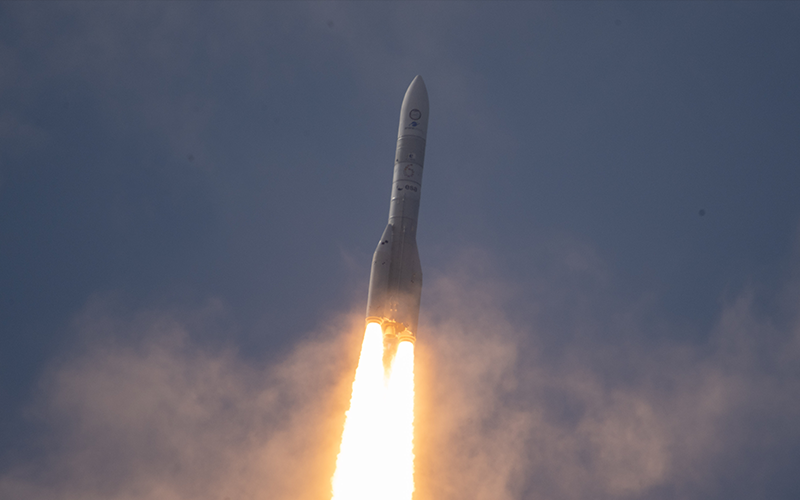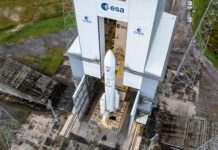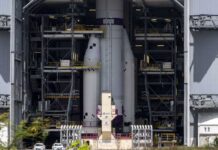
The European Space Agency has successfully overseen the launch of the inaugural Ariane 6 flight and the return of sovereign European access to space.
The Ariane 6 rocket was launched at 21:00 CEST from the ELA-4 launch pad at the Guiana Space Centre in French Guiana. It was launched in the Ariane 62 configuration, which features two solid-fuel P120C boosters.
Following liftoff, booster separation, fairing separation, core stage separation, and a pair of Vinci upper stage boosts, the first payload separation event was successfully completed just over one hour into the mission. The second and third payload separation events were successfully completed less than ten seconds after the first.
Despite the majority of the payloads carried by the rocket having now been deployed, two more are awaiting their separation commands. The Exploration Company’s Bikini Demo and ArianeGroup’s SpaceCase SC-X01 are re-entry capsule demonstrators. Neither capsule has the capability to perform a re-entry burn and, as a result, will stay attached to the Ariane 6 upper stage until it completes its final Vinci boost at just over two and half hours into the mission. Three minutes later, the pair of capsules will be deployed on their fiery return back into Earth’s atmosphere.
What comes next for Ariane 6?
Following the launch, ArianeGroup CEO Martin Sion explained that while the road to the maiden flight is complete, it is now time to take the first step on the long road to fulfilling its current backlog of 30 Ariane 6 flights.
“Now we have to ramp up production to serve our customers, which is already ongoing,” said Sion.
The next Ariane 6 flight is expected to occur before the end of 2024. The mission will see the French CSO-3 spy satellite launched aboard an Ariane 62 rocket. The first Ariane 64 flight is expected to occur in 2025.




